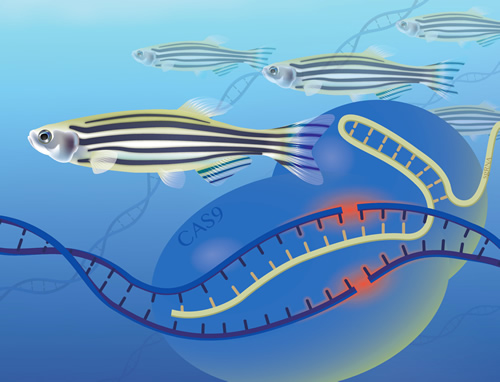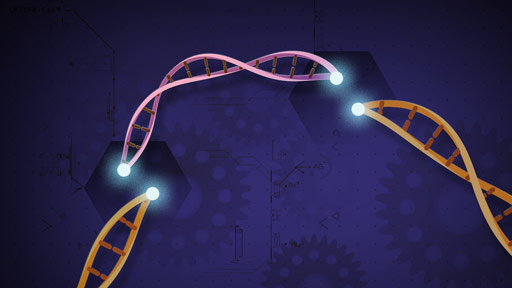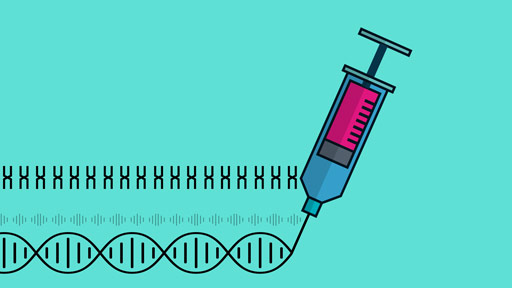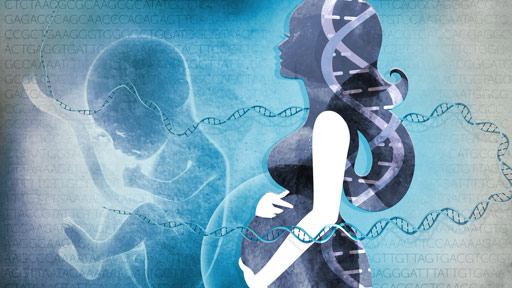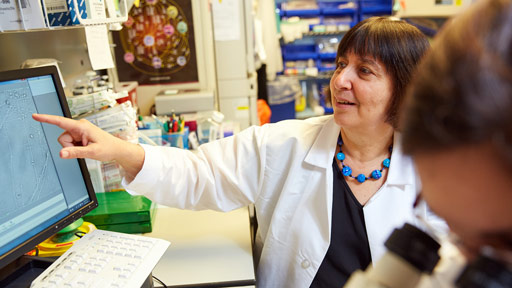Scientists are developing gene therapies - treatments involving genome editing - to prevent and treat diseases in humans. Genome editing tools have the potential to help treat diseases with a genomic basis, like cystic fibrosis and diabetes. There are two different categories of gene therapies: germline therapy and somatic therapy. Germline therapies change DNA in reproductive cells (like sperm and eggs). Changes to the DNA of reproductive cells are passed down from generation to generation. Somatic therapies, on the other hand, target non-reproductive cells, and changes made in these cells affect only the person who receives the gene therapy.
In 2015, scientists successfully used somatic gene therapy when a one-year old in the United Kingdom named Layla received a gene editing treatment to help her fight leukemia, a type of cancer. These scientists did not use CRISPR to treat Layla, and instead used another genome editing technology called TALENs. Doctors tried many treatments before this, but none of them seemed to work, so scientists received special permission to treat Layla using gene therapy. This therapy saved Layla's life. However, treatments like the one that Layla received are still experimental because the scientific community and policymakers still have to address technical barriers and ethical concerns surrounding genome editing.
Technical barriers
Even though CRISPR improved upon older genome editing technologies, it is not perfect. For example, sometimes genome editing tools cut in the wrong spot. Scientists are not yet sure how these errors might affect patients. Assessing the safety of gene therapies and improving upon genome editing technologies are critical steps to ensure that this technology is ready for use in patients.
Ethical concerns
Scientists and all of us should carefully consider the many ethical concerns that can emerge with genome editing, including safety. First and foremost, genome editing must be safe before it is used to treat patients. Some other ethical questions that scientists and society must consider are:
- Is it okay to use gene therapy on an embryo when it is impossible to get permission from the embryo for treatment? Is getting permission from the parents enough?
- What if gene therapies are too expensive and only wealthy people can access and afford them? That could worsen existing health inequalities between the rich and poor.
- Will some people use genome editing for traits not important for health, such as athletic ability or height? Is that okay?
- Should scientists ever be able to edit germline cells? Edits in the germline would be passed down through generations.
Most people agree that scientists should not edit the genomes of germline cells at this time because the safety and Scientific communities across the world are approaching germline therapy research with caution because edits to a germline cell would be passed down through generations. Many countries and organizations have strict regulations to prevent germline editing for this reason. The NIH, for example, does not fund research to edit human embryos.
Scientists across the world held a conference to talk about these and similar ethical issues at the International Summit on Human Gene Editing.

